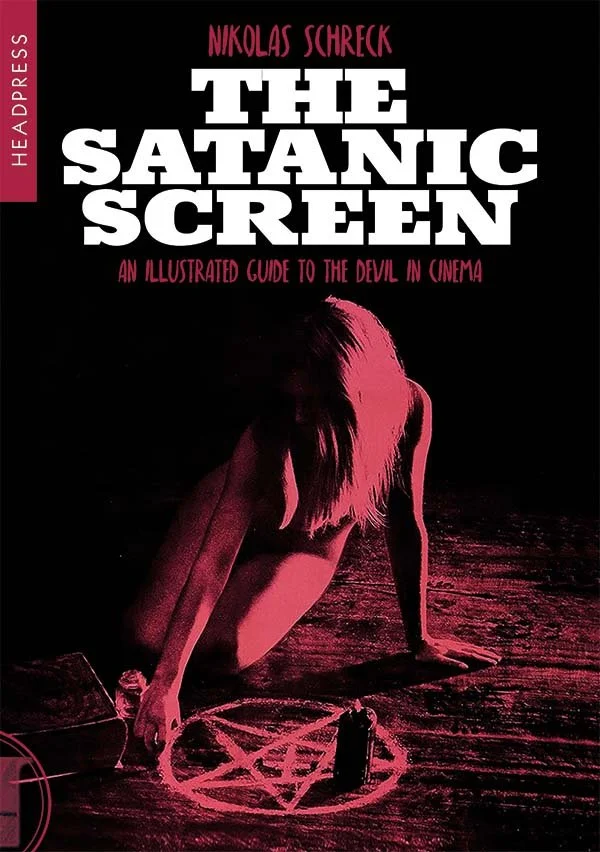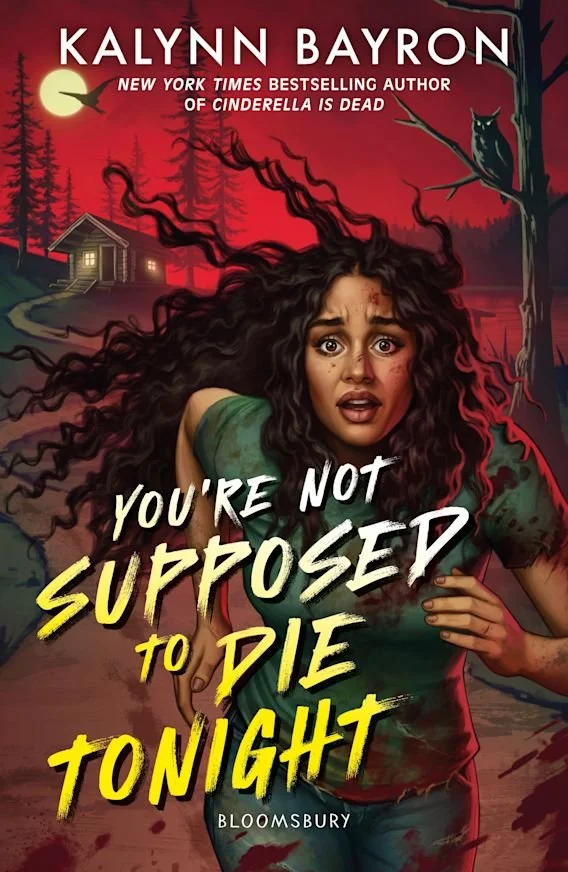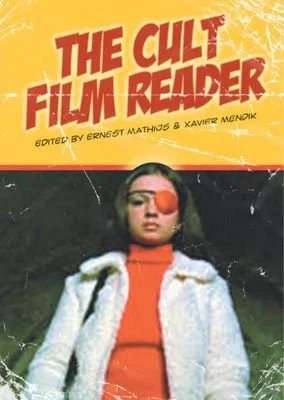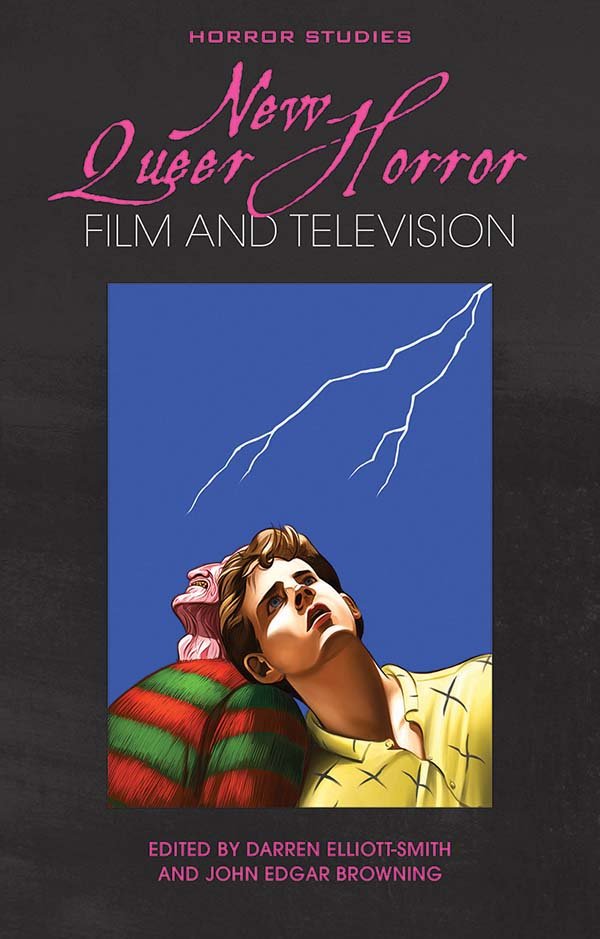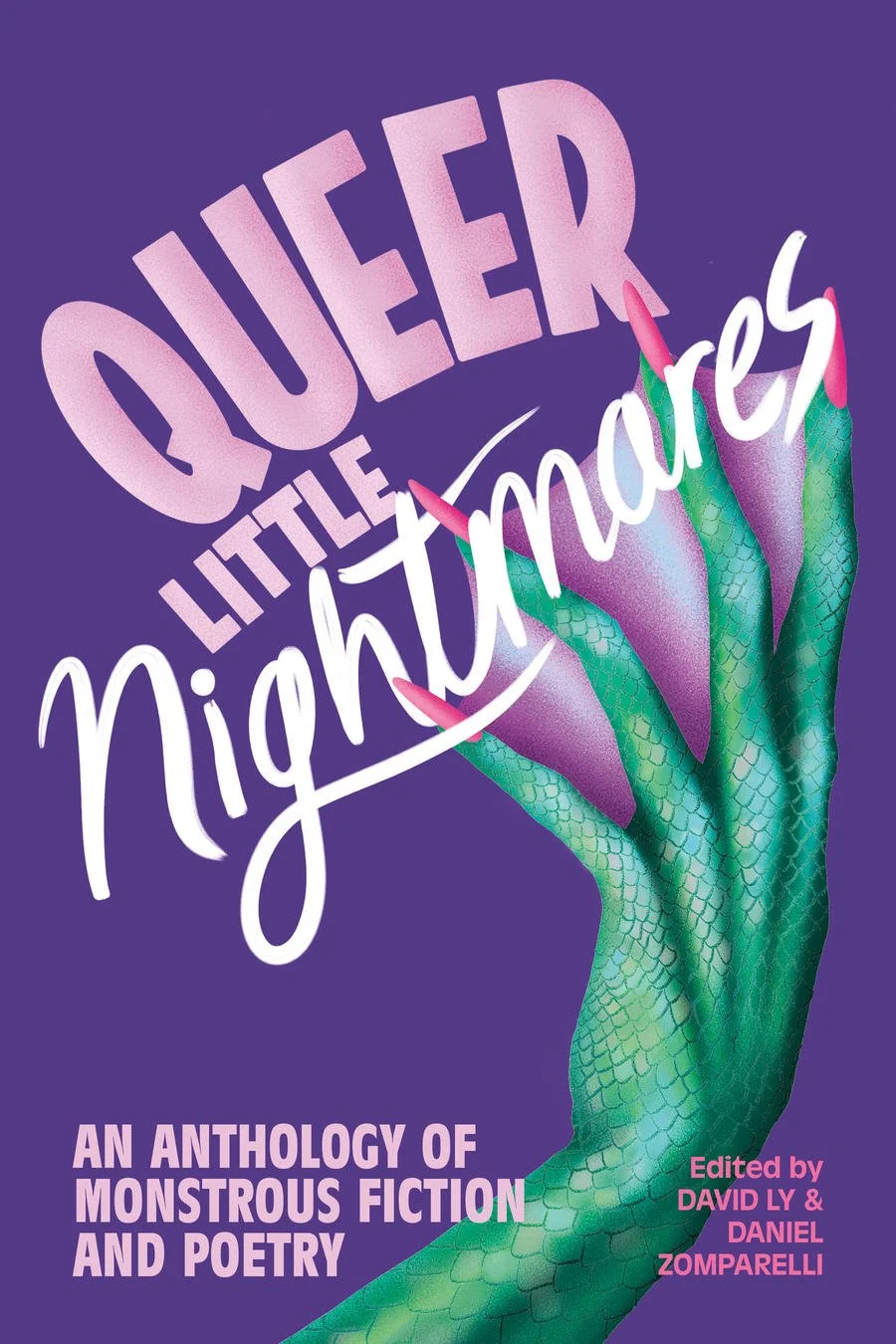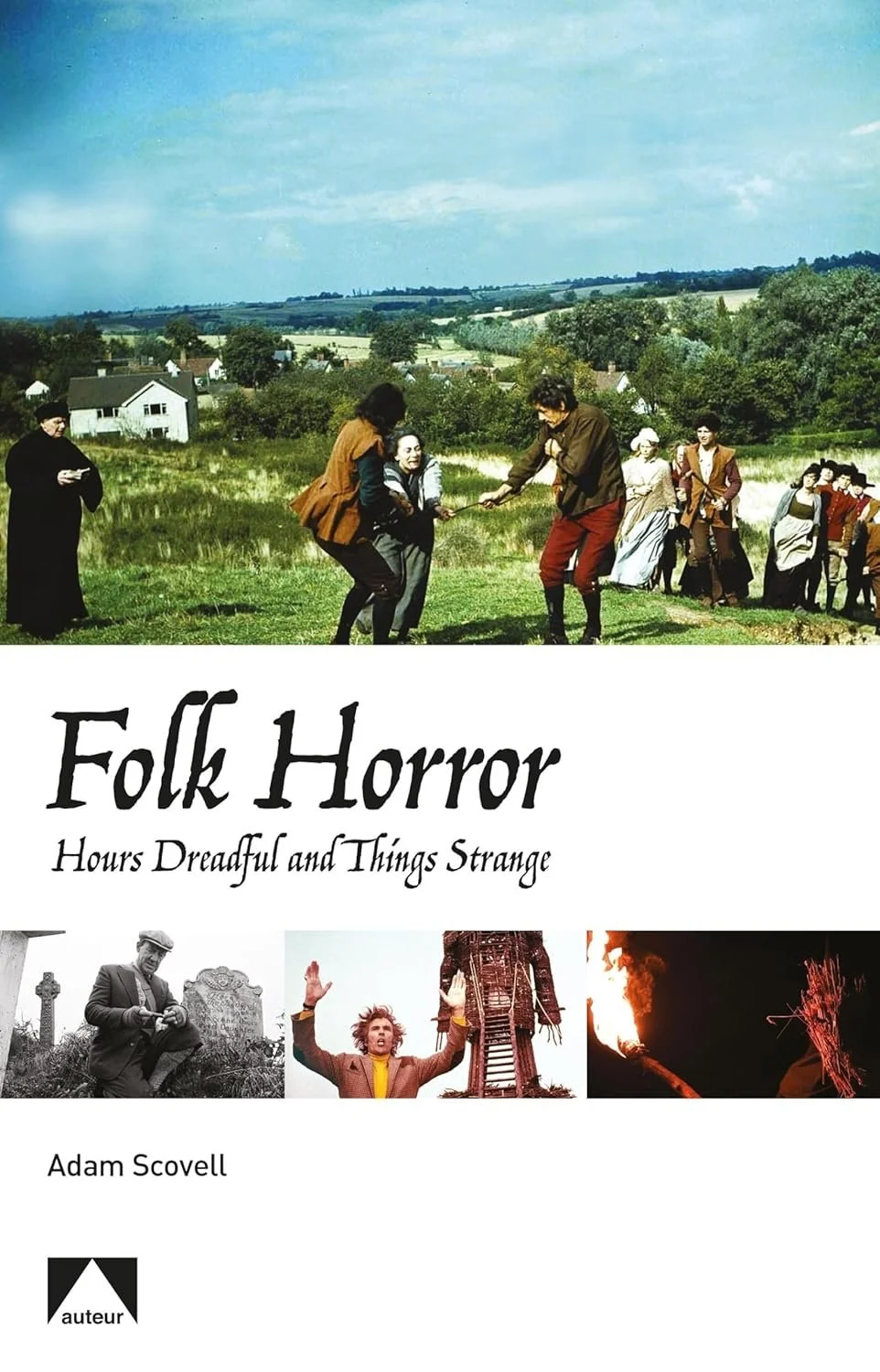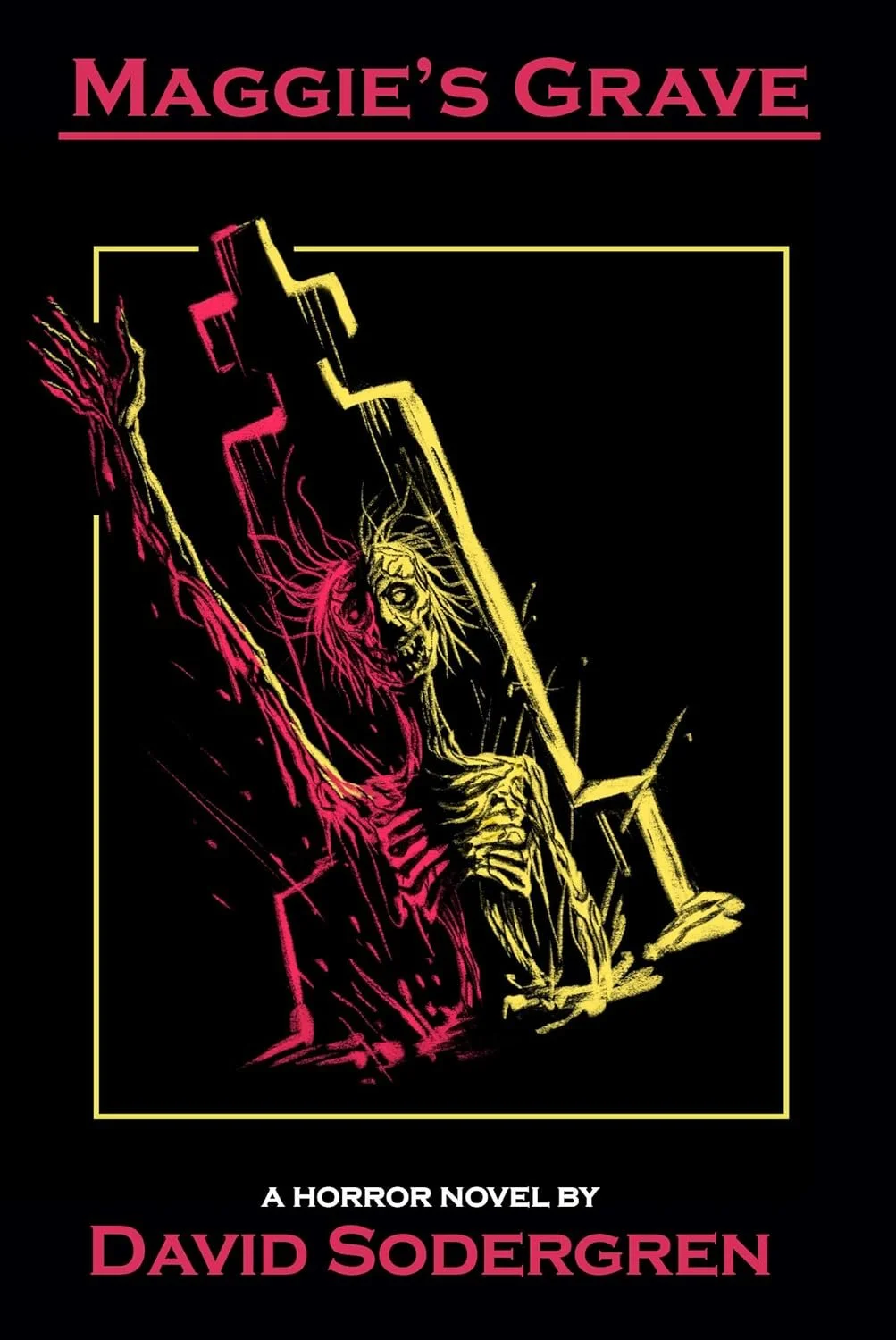It Came From the Shelves... On Writing: A Memoir of the Craft
When it comes to literary craft, and those who have made an impact on the world of words, the modern audience cannot deny the title bestowed upon the Master of the Macabre, Stephen King. Having written over 65 novels, 200 short stories, many of which have been adapted into films or television series — including directorial efforts from the man himself — King continues to be a lasting influence among those who seek scares. For many who gravitated to his stories from an early age, those words held on tight and turned them into lifelong bookworms, lifelong fans; a Constant Reader. At the beginning of the new millennium while dealing with a real terrifying brush with death, King put his pen to paper to discuss just that: how he does it.
Image: Scribner
Originally published in 2000, On Writing: A Memoir of the Craft by Stephen King is an easy read at around 288 pages (give or take depending on edition and printing version) and details the author’s perspective on the language and tools he personally uses to draft his work. The book detours from King’s usual tales of terror and instead offers a more bare-bones approach to how it all comes to life. Currently sitting at 4.3 out of 5 stars on Goodreads, 4.8 out of 5 stars on Audible, and a 90% Google User Rating, On Writing is a worthy writing companion that offers thoughts and insight from one of the most well known names in the business.
So, what exactly does the Stephen King have to say? On Writing, that is…
The Man
It is first important to note that the word “memoir” in the title should not mislead readers into thinking this is an autobiography. While the book is dedicated to how King manages and maneuvers his written pieces, a significant portion of On Writing does give us a glimpse inside his real life from early childhood to literary stardom, including his humble beginnings and downward spirals. On Writing evenly mixes personal anecdotes with solid writing advice through a straightforward, honest side of King that is rarely seen. Like a conversation between good friends, this read is peppered with humor and blunt criticism as King fleshes out the complexity that is turning ideas into fully realized compositions. King does not pretend to know it all which seems to add even more credence to his account on the subject. His commentary, whether it be on his family, publishing, his concepts, and even his addiction, makes for a very candid expression of a true artist who honestly loves and respects his craft and encourages readers to do the same.
The Basics
Where King’s personal narratives provide familiar sentiment, his basic rules of writing turn out a valuable toolbox full of important mini-lessons and useful examples on everything from vocabulary and grammar, to style, form, and pace, to narration and dialogue. He gives grounded feelings on critical review and rejection as well as preaching the importance of reading while briefly dissecting common writing standards, including structure, theme, symbolism, meaning, and more.
On Writing never shies away from sharing the help and support King received from others, particularly his beloved wife, Tabitha, which adds a comforting level of understanding from one so popular. Each section proves he has a competent assessment of writing mechanics resulting in a simplistic way of relaying them to the reader. King knows what makes good storytelling and he assures that no part of it, especially the process itself, is perfect.
The Nuance
Being written over 25 years ago, it's excusable that some of the material and commentary from King is slightly dated. There are pieces of pure gold and few that may be deemed obvious and possibly irrelevant, it truly depends on the reader. The overall insight focuses more on the language itself, the persistence, commitment, and creativity, subject matter that can be applicable to the broadest of audiences.
On Writing is not strictly for fans of the horror genre, as it can be enjoyed by anyone, readers and writers, beginners and the accomplished. While there are plenty of handbooks, biographies, analysis texts, and other articles out there detailing the art of writing, King’s flair makes this book a special and equally comprehensive guide. It’s a book full of masterful bits begging for annotation (I own a spare copy specifically for highlighting). Following the turn of the last page, readers will find themselves with a newfound appreciation for and confidence in their own writing abilities, as well as those of others.
In summary, you won’t find a paragraph on instant success; there is no Dumbo’s magic feather within these pages (King will let you know that himself); however, what you may discover is an encouraging hand of inspiration, honest guidance, and some noteworthy lines to motivate your own work.
On Writing is an essential addition to all writers’ shelves, haunted or otherwise.
On Writing: A Memoir of the Craft Rating: 4/5 highlighters
Pages: 288
Publisher: Scribner
Price: Anywhere from $10.00 to $30.00
Publication Date: 2000
I’ll be back soon with another of King’s books on writing. Until then, thank you for reading.
Your Accursed Librarian,
Jessica
Essential Horror Film And Fiction Books For Every Shelf: Summerween Special [Part Three]!
Spoofing The Vampire: Essays On Bloodsucking Comedy
We could have included any number of Simon Bacon's comprehensive list of books analyzing vampires across visual culture, but Spoofing The Vampire is not only the first book dedicated to dissecting the vampire comedy on film and television, it's also a real treat to read.
Distinguishing between parody, satire, and serious-spoofing, it covers everything from defanging Nosferatu in children's media to "Mocking Masculinity" via subversion in women-directed vampire films to "Vampires Clashing with the 21st Century."
Image: McFarland
Image: Pulp-Lit Productions
Varney The Vampire; Or, The Feast Of Blood
Fans of Penny Dreadful (let's just pretend the show ended before the abysmal final showdown...), this one's for you! Varney The Vampire (often attributed to James Malcolm Rymer and Thomas Peckett) is a popular example of the penny dreadful, notorious Victorian gothic literature serialized in illustrated pamphlets.
Pulp-Lit Productions collects several issues across two volumes, including original woodcut illustrations and presented as they would have appeared in the 1840s, albeit with larger print for reading ease.
The Horror Sensorium: Media And The Senses
Angela Ndalianis' The Horror Sensorium analyzes how storytelling practices, emotional experiences, cognitive responses, and physicality ignite the sensory mechanics of the body and its connected intellectual and cognitive functions.
Image: McFarland
Image: Dark Moon Books
The Five Senses Of Horror
This unique anthology, edited by Eric J. Guignard, offers sixteen horror stories exploring how our impressions of the world are formed by the five senses.
Each entry is accompanied by cognitive, cultural, and literary insights by psychologist Jessica Bayliss, which, in addition to further academic and fiction reading lists, makes this an essential book for writers of psychological or sensory horror.
Killing For Culture: From Edison To Isis
David Kerekes and David Slater's Killing For Culture offers a detailed history of death on film, broken into three sections: the depiction of death in conventional or feature films (focusing on Roberta and Michael Findlay's exploitation film Snuff — originally filmed in 1971 and loosely based on the Manson murders, later released by Alan Shackleton in 1976 with a new ending and marketed as an actual snuff tape), mondo films (shockumentaries purporting to show real death, often containing real animal cruelty), and death captured on film (focusing on the live broadcast of State Senator R. Budd Dwyer's suicide).
This was the first book in the Critierion Cinema series (see part one of our list for another entry, The Satanic Screen), which has since been expanded in a reprint by Headpress — highly recommend getting both editions if you can!
Image: Headpress Books
Image: Independent
Autumn Gothic
An extreme horror novel involving the gods of death, Brian Bowyer's Autumn Gothic is an unrelenting read that takes you on a violent race across America.
After guitarist Mark learns that ritual murder is to thank for his bandmate Delilah’s musical success, she lets him scram rather than become her next sacrifice — before changing her mind and hunting him down.
As she carves her way from LA to a haunted mansion in West Virginia, arriving just in time for Halloween, she discovers Mark and the mansion’s former resident aren’t alone.
Terror Tracks: Music, Sound And Horror Cinema
Focusing on the post-War period, Terror Tracks, edited by Philip Hayward, explores patterns and inflection in a range of scores — orchestral, popular, rock, and electronic — and how these relate to non-musical sound.
Image: Equinox Publishing Ltd
Image: JournalStone
Out Of Tune
Edited by Jonathan Maberry, Out Of Tune is an anthology series split across two volumes that creatively reimagines folk ballads as short dark fiction.
Accompanying each story, folklorist Nancy Keim Comley comments on each source ballad in this wonderful blend of folkloristics, storytelling, and ethnomusicology.
Also had to mention George R.R. Martin's 1983 novel The Armageddon Rag, in which a journalist’s investigation into the death of a rock promoter reveals that his favorite band, Nazgûl, has returned to the music scene with a little help from a demonic force...
Reservation Reelism: Redfacing, Visual Sovereignty, And Representations Of Native Americans In Film
While not horror-specific, Michelle H. Raheja's Reservation Reelism is the first book-length text to explore how the contributions of Indigenous actors, filmmakers, and spectators helped to shape the representation of Indigenous peoples in Hollywood.
A comprehensive study that fully embraces the complexity of this relationship, it attempts to create positive representations in film that reflect the influence and experiences of Native peoples and communities in Hollywood and beyond.
Image: University of Nebraska Press
Image: Knopf Doubleday Publishing Group
Never Whistle At Night: An Indigenous Dark Fiction Anthology
Edited by Shane Hawk and Theodore C. Van Alst Jr., Never Whistle At Night is bursting with 26 stories from Indigenous North American authors.
Featuring a foreword by Stephen Graham Jones, who introduces and frames the importance of the book's Native perspective when he speaks to a specific fear of the "colonized body" in possession narratives, the breadth and range of subjects, style, and sociocultural themes explored resonates beyond literary representation.
Essential horror film and fiction books for every shelf: Summerween special [part two]!
Beyond Terror: The Films Of Lucio Fulci
Stephen Thrower's Beyond Terror is an exhaustive examination of the filmmaker's life and career.
Published by FAB Press in 2018, the revised and expanded edition — with a whopping 120 extra pages! — is a thing of beauty.
Produced with the blessing of Fulci's daughter Antonella, who also pens the foreword, the tome boasts the largest collection of Fulci posters, stills, press-books, and lobby cards in print. With 1,100 illustrations and 80 color pages, the book also contains substantial appendices — including complete filmographies for all actors.
At the time of writing, a special edition of the book is still available from FAB Press. Housed in the Eibon box, it includes a bonus interview chapter and comes with a free bonus DVD containing Fulci trailers.
Image: FAB Press
Image: Quirk Books
Lindsay King-Miller's The Z Word is a fun blend of horror, humor, and heart.
As the LGBTQ+ community in San Lazaro, Arizona celebrates Pride week, Wendy is not only thrust into the drama of coming face-to-face with her ex but must also face a deadly outbreak turning members of the queer community into violent hordes resembling zombies.
A sapphic survival story with a timely serious message, the book's queer lens — from the importance of found family to socio-political commentary surrounding the targeted infection — feeds into an interesting approach to classic zombie lore.
In tribute to Fulci's Gates Of Hell trilogy, another couple of fiction pairings we had to mention are directly inspired by the films: The Beyond: Stories Inspired By The Lucio Fulci Death Trilogy, an anthology curated by Raffaele Pezzella, and David Sodergren's And By God's Hand You Shall Die.
Corpses, Fools and Monsters: The History and Future of Transness in Cinema
The wee caveat here is that we're including an unpublished book (preorder via the above link); however, we're super excited for this title, which will be on our shelves as soon as it's out!
Corpses, Fools and Monsters by Willow Maclay and Caden Gardner is "[a] radical history of trans images in film, and an exploration of the political possibilities of the new trans cinema movement.
Analysing the work of trans cinema directors Isabel Sandoval, Silas Howard, and the Wachowski Sisters, it also discusses the trans film image in everything from pre-talkie films and Ed Wood B-movies to Oscar-winners, body horror and slashers.
Going beyond reassessing notable films, performances, and portrayals, Corpses, Fools, and Monsters instead brings to light films and artists not given their due, along with highlighting filmmakers who are bringing trans cinema out of the margins in the twenty-first century."
Image: Repeater
Image: Ghoulish Books
Bound In Flesh: An Anthology Of Trans Body Horror
Bound In Flesh, edited by goop maestro Lor Gislason, presents a collection of 13 body-horror stories as diverse as the trans and non-binary voices behind them.
Ranging from the graphic to the surreal, each immersive entry pushes boundaries in every sense; from (sexualized) surgical transformation to shape-shifting across gender and species; a parasitic plague to dysphoria surrounding reproductive challenges; and the most satisfying reverse exorcism to the symbiotic relationship between sadist and masochist in the dance of perpetual death.
An incredibly nuanced and articulate anthology, Bound In Flesh will both shock and stimulate — staying with you long after you turn the last page.
In Shocking Representation, Adam Lowenstein explores how horror films engaged the haunting social conflicts left in the wake of World War II, Hiroshima, and the Vietnam War.
From Georges Franju to Michael Powell to David Cronenberg, Lowenstein reveals how such directors' work allegorically challenged "comforting" historical narratives and national identities intended to soothe public anxieties in the aftermath of national traumas.
Encompassing the emerging field of trauma studies, the book examines the relationship between the genre and real horror — both past and present.
Image: Columbia University Press
Image: Fantagraphics Books
Emil Ferris' My Favorite Thing Is Monsters is a hauntingly beautiful coming-of-age graphic novel, illustrated in the crosshatched ballpoint style.
Set in 1960s Chicago, the novel is presented as the notebook of 10-year-old horror-obsessed Karen. As she attempts to solve the murder of her upstairs neighbour Anka, a Holocaust survivor, her investigation unravels a complex neighborhood network of stories — exploring class, sexuality, race, and gender — that connect past and present.
Karen is half-Mexican and queer, and her love of horror is used as a lens to navigate her identity and personal and sociopolitical experiences; she draws on horror's subversive power of representation in her art, inking herself as an androgynous werewolf detective and her gay Black friend, Franklin, as Frankenstein's monster.
Written over a six-year period — though she would eventually regain motor function, Ferris was left paralyzed from the waist down, with loss of movement in her right hand, after contracting West Nile fever from a mosquito bite — it's not only a testament to her resolve and talent, but an award-winning masterpiece.
Horror Noire: A History of Black American Horror from the 1890s to Present
You've no doubt watched the superb documentary Horror Noire: A History Of Black Horror, but the source book by Robin Means Coleman is required reading.
Horror Noire: A History of Black American Horror from the 1890s to Present chronologically charts the representation of Blackness in horror, from Hollywood to Blaxploitation to Nollywood.
The second edition, released in 2022, is expanded to include participation and roles behind the camera, with new sections dedicated to the 2000s and 2010 onward.
With a particular focus on films from the past decade, the book explores fears and anxieties surrounding race, and how race relations are represented and challenged onscreen.
Image: Routledge
Image: MacMillan
The Black Girl Survives In This One: Horror Stories
Featuring 13 stories led by Black girls who come face-to-face with monsters — both mundane and supernatural — and survive, this YA anthology is a celebration of Black women in horror.
Edited by Desiree S Evans and Saraciea J Fennell, the collection is crafted entirely by women of color, led by a foreword exploring the history of Black women in film and literature by award-winning author and educator Tananarive Due.
Each story is immersed in Black culture and showcases the resilience, vulnerability, and strength of its protagonist, as the Black heroine saves herself in tales with themes ranging from generational curses to witchcraft to afrofuturism.
As the title states, each story demolishes the historical trope of Black characters being sidelined in supporting roles in horror, reclaiming and commanding this space for central Black heroines in a key evolutionary text that goes beyond literary representation.
Recreational Terror: Women And The Pleasures of Horror Film Viewing
Isabel Cristina Pinedo's Recreational Terror analyses how the contemporary horror film produces recreational terror as a pleasurable encounter with violence and danger for female-identifying spectators.
An incredibly important book that explores the enjoyment of watching horror, challenging the argument that violent horror films only degrade women and incite violence, and instead discussing the ways the genre is a cultural outlet to express rage and terror in the midst of social upheaval.
From race horror to culture politics, Recreational Terror not only comments on the complexity and contradictions inherent in confronting violence onscreen, but makes every single female-identifying horror fan feel seen.
Image: SUNY Press
Image: Bloomsbury
Medusa: The Girl Behind The Myth
Jessie Burton's Medusa retells the titular character's story, focusing on feminism, sisterhood, and the power and connection of stories.
This horror-adjacent work is full of foreboding, charting Medusa's lonely existence after being cursed for her beauty — transformed into a 'monster' by the jealous Athena — and her relationship with Perseus.
Complemented by full-color illustrations by award-winning artist Olivia Lomenech Gill, Medusa's heartbreaking story is reclaimed and humanized in this breathtaking book.
As ever, thank you for reading. If you missed part one, you can read it here.
We’ll be back next week with part three of our bumper book list; until then, stay spooky!
Essential horror film and fiction books for every shelf: Summerween special [part one]!
Happy Pride! Summer is officially here and whether you're a spooky sun bunny or longing for autumn darkness, I think we can all agree that Summerween is a perfect excuse to make that horror TBR pile a little bigger...
Throughout the month of June, we're taking over the blog with a three-part It Came From The Shelves... Summerween special!
Each week, we'll add to a list of recommended horror books from the Hex Libris stacks, pairing essential film theory books with fiction faves.
Grab your drink of choice and let's go!
Image: Headpress
The Satanic Screen: An Illustrated Guide To The Devil In Cinema
Nikolas Schreck's The Satanic Screen is a fabulous compendium of Satanic films.
A practitioner of magic, Schreck draws on his own spiritual and occult knowledge to explore the symbiotic relationship between the films and leading occultists.
Originally published in 2001, Headpress released a revised and updated edition in May 2024.
At the time of writing, special edition hardback copies are available directly from the website!
Between Two Fires
The depiction of the devil can be interpreted in so many ways, but I went with Christopher Buehlman’s Medieval horror Between Two Fires for this pairing — mostly as I don't hear it talked about too often, and also as I felt it a bit of a cop-out to recommend source material for films covered in The Satanic Screen.*
Set in France during the Black Plague, Between Two Fires follows a former knight and orphan girl as they travel across a world (and even Hell itself) blighted by Lucifer and his band of fallen angels as they wage war on Heaven. The episodic structure of this historical horror (heavy on the Christian iconography and themes, with a dash of fantasy) plays like a horror video game, resulting in something of a poetic mash-up between Dante's Inferno, The Seventh Seal, and Constantine.
(*Though I have to include Arturo Pérez-Reverte's The Club Dumas; while The Ninth Gate was loosely (it removes the eponymous Dumas connection for a start...) based on the book, the film doesn't hold a candle to it. The Club Dumas is a book about a cursed book. With a book detective. Occult bibliophiles. Literary murder mysteries (with bookplates). Plus, Satan. Seriously, what more do you need?)
Image: Continuum
Blood Money: A History Of The First Teen Slasher Film Cycle
Horror film scholarship’s complex history with dominant psychoanalytic models, specifically in relation to the slasher film, traditionally posited that the violence and misogyny within these formulaic films catered to a young male demographic.
Richard Nowell's Blood Money — a meticulously researched study that draws comparisons with post-classical Hollywood films and viewership — shifts this focus to demonstrate how North American filmmakers and marketers went to extraordinary lengths to make early teen slashers attractive to girls.
You’re Not Supposed To Die Tonight
"Final girl" Charity has landed her dream summer job at Camp Mirror Lake, recreating scenes from the 1983 cult slasher film, Curse of Camp Mirror Lake.
But as life starts to imitate art when one of her co-workers is found dead, she'll have to become the final girl in order to survive the night and discover Camp Mirror Lake's secrets.
A sapphic slasher with a summer camp setting that’s laced with 80s nostalgia, Kalynn Bayron’s YA novel has all the feels and is perfect for both younger audiences — as well as 'classic' horror fans (shout out to my 80s babes) of Fear Street, Point Horror, and Christopher Pike.
Image: Bloomsbury
Image: Open University Press
The Cult Film Reader
The Cult Film Reader, edited by Ernest Mathijs and Xavier Mendik, collects essays on the canon of cult cinema and its trends, icons, auteurs, and periods of global film production.
Divided into four areas — The Conceptions of Cult; Cult Case Studies; National and International Cults; and Cult Consumption — the book features seminal essays such as Susan Sontag's "Notes on Camp" and Jeffrey Sconce's "Trashing the Academy."
It Was All A Dream: An Anthology of Bad Horror Tropes Done Right
As a bit of a fun antithesis to the comprehensive survey of cult cinema traditions in The Cult Film Reader, It Was All A Dream is an enjoyable and inventive subversion of horror tropes across 26 short stories. While the writers are clearly having a blast — detailing the existential crisis of being the final final girl; why being possessed by a good entity is just as bad; and legal loopholes when making a deal with the devil — it's a real rollercoaster of emotions (as ever, do check content warnings).
With original cover art by Evangeline Gallagher and original interior illustrations by Christopher Castillo Díaz, it's also beautiful to read.
Image: Hungry Shadow Press
Image: University of Wales Press
New Queer Horror: Film and Television
Edited by Darren Elliott-Smith and John Edgar Browning, New Queer Horror is an anthology studying the form, aesthetics, and representations of LGBTQ+ identities in an emerging subgenre of film and television (post-2000) termed ‘New Queer Horror.’
Building on existing scholarship surrounding queer monstrosity, the collection features twelve essays exploring how this subgenre portrays contemporary anxieties within LGBTQ+ subcultures via character representation and narratives, examining how “New Queer Horror has turned the focus of fear on itself, on its own communities and subcultures.”
Queer Little Nightmares: An Anthology Of Monstrous Fiction And Poetry
Queer Little Nightmares examines the figure of the monster in horror — typically demonized, marginalized, and outcast — through a queer lens, celebrating and reclaiming these characters as queer icons.
Across 32 pieces of short fiction and poetry, the collection creatively explores themes such as identity, belonging, and coming into queerness. The diversity of LQBTQ+ voices contributing to this anthology — depicting 'monstrous' creatures from Eve to kaiju to the ghosts of Pride past — creates a beautiful melting pot of deeply human stories about what it means to "be (and to love) a monster."
Image: Arsenal Pulp Press
Image Auteur
Folk Horror: Hours Dreadful And Things Strange
Adam Scovell's Folk Horror: Hours Dreadful and Things Strange explores folk horror from a hauntological and topographical perspective, as the book's Shakespearean subtitle beautifully illustrates.
Covering an astounding body of films and television series — ranging from depictions of ancient Britain to modern Europe, and encompassing both ruralism and urban spaces — the book is a painstakingly researched study on the representation of the esoteric arts in the latter half of the twentieth century.
Maggie's Grave
As four young friends contemplate their bleak futures in the isolated, decaying town of Auchenmullan, which lies forgotten in the shadow of a mountain in the Scottish Highlands, they learn the hard way that the town is actually cursed when they take a tourist to the local haunt 'spot' — Maggie's Grave.
Falsely accused as a witch, Maggie has returned to claim what was taken from her...
A modern folk-tale, David Sodergren’s Maggie's Grave is a punchy, cinematic ride that packs in the body horror (perhaps the best character entrance ever?), comedy (who knew James Blunt's "You're Beautiful" could be more horrific?), and so much heart (believable small-town characters, social commentary, and an ending that will break your heart — before ripping it out).
Image: David Sodergren
As ever, thank you for reading.
We’ll be back next week with part two; until then, stay spooky!
It Came From The Shelves... Found Footage Book Recs
Welcome to the latest edition of It Came From the Shelves..., our tried-and-tested series where we recommend books from the Hex Libris stacks across three areas:
—writing, mindful reading, and personal development (such as R.L. Stine’s There Is Something Wrong With My Brain);
—reading resources (such as Productivity Game);
—collected titles by topic, notably (horror) film analysis / theory.
As this is the first entry in our collection series, where else to start than with our beloved found footage horror? Read on for recommended reference books, epistolary fiction, and a couple of open access publications...
Open Access
Horror Homeroom, run by Filtered Reality contributor Dawn Keetley, Elizabeth Erwin, and Gwen Hofmann, covers all aspects of horror and publishes digital collections, such as Issue #7 (Spring 2023): Found Footage Horror.
Edited by Ellen Boyd, Lauren Gilmore, and Keetley, this open access collection approaches its topic from a variety of engaging and refreshing perspectives, from the archival horrors of Y2K websites to digital existentialism to the horrors of influencer culture in Deadstream (2022).
Grab your drink of choice and read here!
Grim journal, showcasing the voices of women, LGBTQ+, and BIPOC writers and creators, is an open access publication from Anatomy of a Scream — founded by HoL's Accursed Librarian, Valeska Griffiths.
Issue #11 (September 2022), Reel Fake: Hex, Lies & Videotape, sets the tone with a searing editorial note on the horrors of navigating increasing digital consciousness in the current landscape, with pieces covering analog horror, narcissism in online culture, and the frightful intimacy of forced perspective in relation to true crime. "Welcome to the age of perpetual visibility..."
Read here!
Found Footage Fiction
Found: An Anthology of Found Footage Horror Stories, edited by Andrew Cull and Gabino Iglesias, presents eighteen shorts that capture the cinematic beats of found footage horror -- just look at that cover...
Each contribution is strong, with the bar set high by a beautiful introduction, and the seamless yet well-rounded selection flows easily through tales of the supernatural, stalkers and serial killers, and clever approaches to urban legends.
I'm very excited to hear that a sequel is in the works, especially as "What was found cannot be forgotten, cannot be unseen, cannot be undone..."
Episode Thirteen, by Craig DiLouie, is one for lovers of ghost hunting shows.
The book follows the crew of one such show, Fade to Black, as they tackle their biggest location to date, the derelict site where the Paranormal Research Foundation conducted mysterious experiments in the 1970s before vanishing.
The story unravels piece by piece across tapes, journals, and digital correspondence, and, without saying too much, is a nuanced approach to the subject that covers a variety of perspectives across the team and goes to some unexpected places.
Highly recommend listening to this on Audible, as it's a full cast production and plays perfectly to the book's multimedia format.
Mister Howl is a found footage illustrated novel from T.W Burgess, who also created Early Haunts, a graphic novel collecting four forgotten ghost stories and incorporating augmented reality to bring them to life.
Mister Howl is a supernatural take on Rear Window, with our protagonist, Jay, confined to a wheelchair and documenting a shadowy figure in the opposite residential block — the titular Mister Howl — via analog recordings.
Burgess is a master of the immersive horror experience, and the haunting, grainy images accompanied by ephemera such as short-hand diary entries, audio logs, and reference papers invite you to solve the mystery with Jay.
Although out of print at the moment, there are plans for another run. Be sure to follow T.W. Burgess on socials to keep up to date.
Found Footage Film Theory
Found Footage Horror Films: Fear and the Appearance of Reality, by Filtered Reality contributor Alexandra Heller-Nicholas, offers a comprehensive overview of found footage.
Not only does it provide a blueprint for the stylistic, historical, and thematic development of found footage as a contemporary framework, it focuses on pivotal milestones such as public safety films, “snuff-fiction” films, and faux-factual television from the 1980s and 1990s, with a focused section on Ghostwatch (1992).
Found Footage Horror Films: A Cognitive Approach, by Filtered Reality contributor Pete Turner, focuses its lens on mediated realism in found footage horror.
Exploring how such films are intentionally constructed to appear as nonfiction, it applies a theoretical framework that incorporates mimesis and narration to examine how the diegetic camera technique and point-of-view perspective affects viewers' cognitively.
Blood on the Lens: Trauma and Anxiety in American Found Footage Horror Cinema, by Shellie McMurdo, explores the relationship between found footage narratives and significant traumatic events and anxieties across the American socio-cultural landscape — both historical and contemporary.
Found footage horror's unique ability to thematically and aesthetically confront and comment on this trauma and anxiety is discussed in terms of the wider context of the format's innovative and pervasive nature, and how it continues to endure even as we enter a post-cinematic age.
In Digital Horror: Haunted Technologies, Network Panic and the Found Footage Phenomenon, edited by Linnie Blake and Xavier Aldana Reyes, Aldana Reyes notes that found footage is a framing device undefined by genre, rather than a subgenre of horror.
Along with Blake, Aldana Reyes uses the term “digital horror” in this anthology to accommodate several categories, including found footage, technological hauntings, and snuff films — all of which perpetuate a contemporary anxiety around surveillance that leads to social alienation and security paranoia.
House of Leaves Publishing (2024)
And we couldn't leave without mentioning our own tribute to found footage, sixteen chapters dedicated to the progenitors (including epistolary novels like Dracula (1897), radio shows such as The War of the Worlds (1938), grand-guignol theater, television (Ghostwatch)) and evolution of the contemporary found footage horror film (including the rise of digital folklore in The Blair Witch Project (1999), an anthropological analysis of Cannibal Holocaust (1980), and post-cinematic horror in Host (2020) and beyond).
Read more about Filtered Reality here.
We hope you enjoyed reading, fellow found footage fiends!
This is far from a complete list so do let us know what titles you would add, and we’ll include them in any further installments!
Until next time, stay spooky!
It Came From The Shelves... Reading Resource: Productivity Game
“The difference between where you are today and where you’ll be five years from now will be found in the quality of the books you will read.”
—Jim Rohn (via Productivity Game)
With a how-to book on everything these days, how do you quickly sort through the pile to find the one that speaks to you?
Productivity Game, created by Nathan Lozeron, distills the premise of new and bestselling books on personal and professional development via animated videos.
Broken into three general areas — Business & Innovation, Influence & Leadership, and Personal Development & Peak Performance — each video delivers "actionable insights" that you can implement immediately, while the succinct overview allows you to quickly discern what titles suit both your current schedule and desired routine.
As a distracted writer, the Productivity Game YouTube channel has become an essential reading resource to enhance my productivity and manage my time more effectively — by allowing me to gauge which books cater to or offer transferable takeaways for creative endeavours such as writing, especially balancing this output with work and home life.
If you’re ready to up your productivity game but are unsure where to start, the Productivity Game website catalogues all of the book titles covered with a link to each video.
I also highly recommend subscribing to the Productivity Game newsletter to receive notifications when a new video is released; this includes one-page PDF book summaries, along with a free ebook: 5 Steps to Finding Your Workflow.
Happy watching and reading! Let us know any titles covered by Productivity Game that you'd recommend by leaving a comment below or on socials...
Thank you for reading. Your Accursed Librarian, Rebecca.
It Came From the Shelves... There Is Something Strange About My Brain!
Welcome to the first of our tried-and-tested series, where we recommend books (and other media) from the Hex Libris stacks.
We're starting with a bit of a fun one: R.L Stine's There Is Something Strange About My Brain!: Writing Horror for Kids.
A condensed version of Stine's Masterclass (which you may or may not be able to watch for free with a 30-day trial...), aside from the nostalgia kick for horror fans (I was grinning from ear to ear and devoured this in one sitting), it's a quick and punchy read that cuts straight to its many transferable points.
Image: Erudition
Reader, Beware…
However, before we touch on these, the caveat for this recommendation is that the book is extremely bare bones.
Around one third of its page count consists of blank pages with singular writing prompts, with another third dedicated to examples of Stine's initial drafting and editing process.
The fact that the book doesn't offer cover-to-cover writing advice is a tad misleading, especially at that price point (nearly £20), but the writing exercises do present a creative approach that encourages you to practically put pen to page (more so than any other guidance book I've read on writing).
The actual writing advice is whittled down to 62 tips and tricks (often just a few paragraphs), but it's precisely the book's lean structure and simple focus, peppered with comical and constructive anecdotes from Stine's long career, that make it a worthy addition to the shelves.
Whether you write horror or write about horror, Stine's (strange) brain is definitely worth picking. My top three takeaways:
Reference
First and foremost, fiction writers are of course going to get the most out of this. If you're new to writing, the constructive nature of the book, from the creative writing prompts to outlining examples from Stine's books (including editorial notes), steers you through each step without being bloated or overwhelming.
I particularly love the functional advice, such as starting with short stories before trying to outline a full book, and also how to ensure your project works as a standalone while simultaneously crafting the beats for a series.
Still, no matter where you are in your writing journey, dipping into the book is a fun way to refresh your approach to the craft. The combination of concise tips with Stine's simple writing style allows you freedom to integrate ideas into your own routine while making you think about your overall approach in that area, and the mini-workbook encourages you to step out of your comfort zone creatively.
Resource(ful)
While its merits for authors are more readily discernible, there are plenty of nuggets for non-fiction writers, from practical tips to enhance your productivity, to reflective questions that remind you why you started writing in the first place.
With a little imagination, the guidance can easily be applied to essays, encouraging you to think creatively about pacing, plotting, and Stine's staple cliffhanger.
The writing prompts are also an excellent way to fend off writer's block, try your hand at something new, or to simply write something for your own enjoyment (I know, A Shocker on Shock Street...).
Plus, the book has one of my favourite additions in a guidance book: further reading lists, as approved by Stine. This is a real treasure trove, including books on all aspects of writing for different genres and Stine's favourite literature (as well as which of his own books he recommends picking up).
Readability
No matter which horror camp you fall into, while completing your writing project is one feat, reaching readers is a completely different ball game.
Readability is key to ensure promotional writing is both clear and enjoyable to read.
To achieve this, copywriters often aim to write for year 7 (6th grade) reading ease; as There Is Something Strange About My Brain! is designed to craft stories for this age group, it's a brilliantly creative tool to help you write clear copy that resonates with your intended audience.
The End… or Is It?
In short, There Is Something Strange About My Brain! is a fun way to discover your writing style or wrench yourself out of a writing slump. (Plus, it's definitely one for the collectors!)
In Stine's words, maybe it "can help you enjoy your writing more." It helped me.
Simple, succinct, Stine. What more could you want?
It Came From the Shelves... rating: 3/5 Slappy's.
Pages: 204
Publisher: Erudition
Price: £17.99
Publication date: 2023




![Essential Horror Film And Fiction Books For Every Shelf: Summerween Special [Part Three]!](https://images.squarespace-cdn.com/content/v1/5a89e7c6be42d637c550369c/1719160839051-TZ9HH5HP1PTUJVH63QT8/20240621+Hex+Libris+Blog+-+Black+and+Grey+-+Logo+-+on+White.png)












![Essential horror film and fiction books for every shelf: Summerween special [part two]!](https://images.squarespace-cdn.com/content/v1/5a89e7c6be42d637c550369c/1719160743473-9VFEVGPA5NQLCHSC1YRD/20240621+Hex+Libris+Blog+-+Black+and+Grey+-+Logo+-+on+White.png)







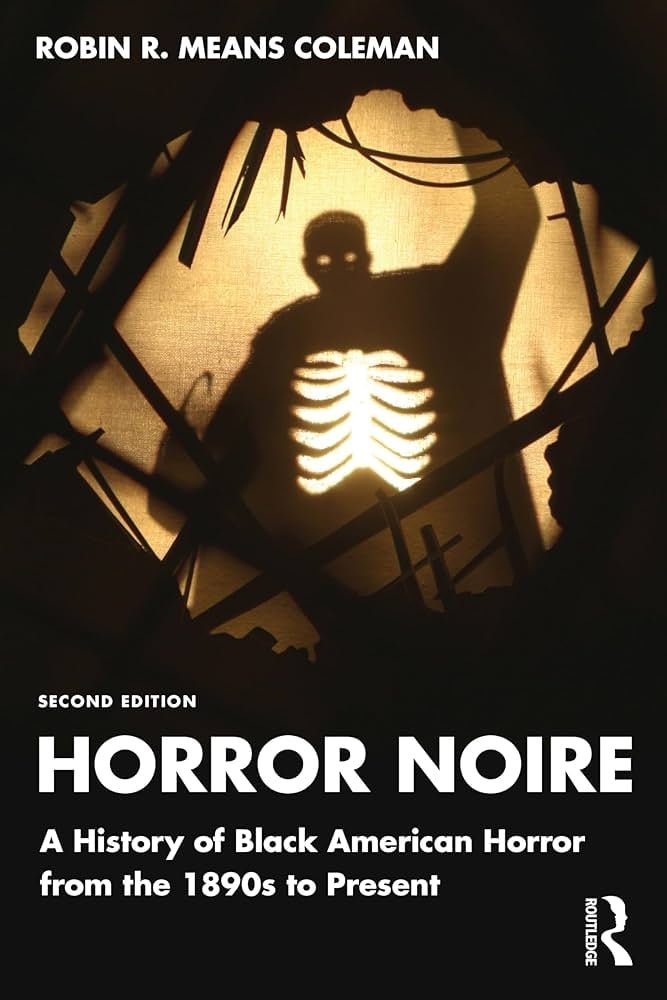




![Essential horror film and fiction books for every shelf: Summerween special [part one]!](https://images.squarespace-cdn.com/content/v1/5a89e7c6be42d637c550369c/1719160794420-QGGSLVELC4CNWOVID4NR/20240621+Hex+Libris+Blog+-+Black+and+Grey+-+Logo+-+on+White.png)

